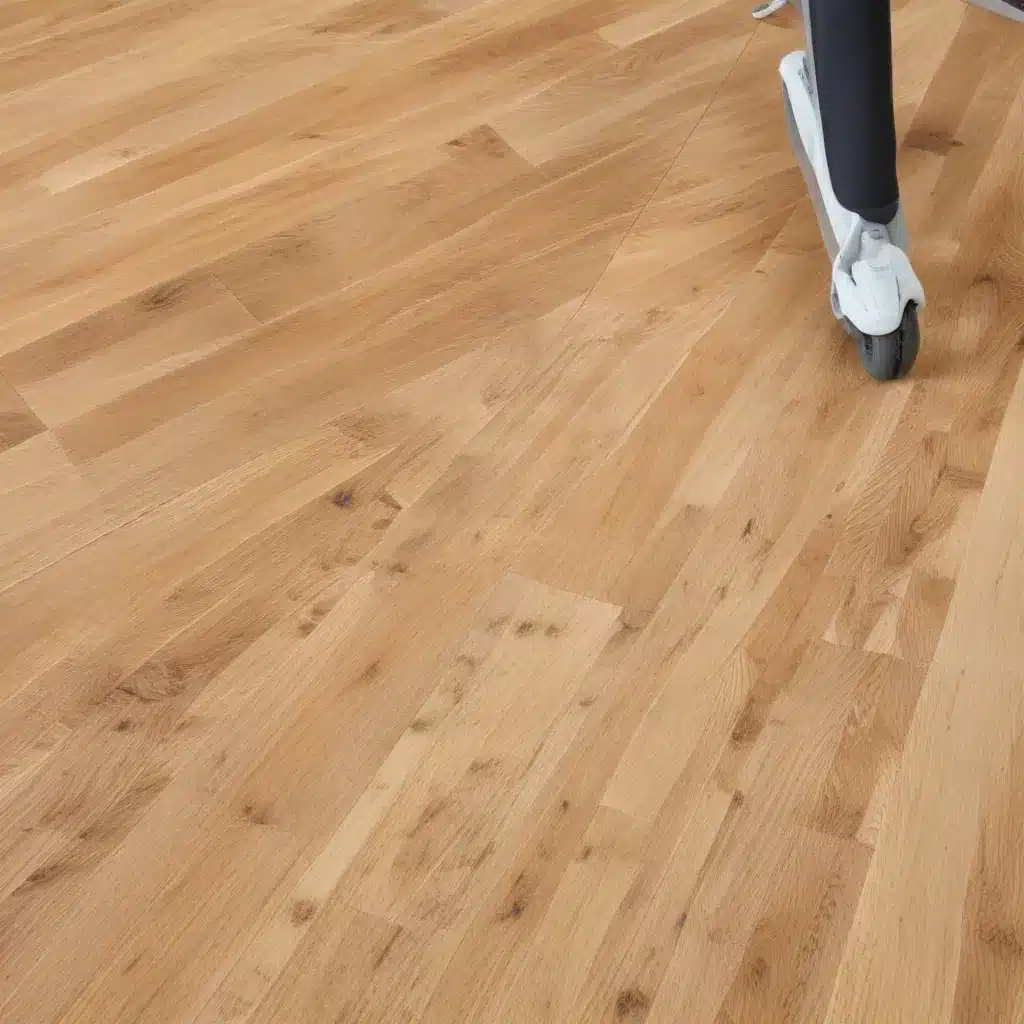
Oak Flooring and Accessibility: Considerations for Mobility Needs
The Vital Role of Oak Flooring in Accessible Homes
As an experienced oak flooring specialist, I’m here to share invaluable insights on selecting, installing, finishing, and maintaining oak floors that cater to the unique needs of individuals with mobility challenges. Whether you’re building a new accessible home or renovating an existing space, this comprehensive guide will empower you to create a safe, comfortable, and visually appealing environment that seamlessly integrates oak’s timeless beauty with accessibility.
Embracing Oak’s Versatility for Mobility Needs
Oak flooring stands out as a top choice for accessible homes, offering a winning combination of durability, stability, and design flexibility. Its robust construction can withstand the demands of wheelchair use, walkers, and other mobility aids, while its natural grain patterns and varied finishes harmonize beautifully with diverse décor styles.
Durability and Stability: Oak’s inherent hardness and resistance to wear and tear make it an ideal foundation for high-traffic areas. The dense wood grain provides ample traction, minimizing the risk of slips and falls for those with limited mobility. Moreover, oak’s dimensional stability ensures a level, secure surface that won’t easily warp or buckle under the strain of heavy equipment.
Seamless Integration: Oak’s versatile aesthetic seamlessly blends with a wide range of accessible design elements, from sleek modern interiors to cozy traditional spaces. Its warm, earthy tones and distinctive grain patterns can be enhanced through strategic finishing techniques, allowing homeowners to tailor the look to their unique preferences and accessibility requirements.
Sustainability and Longevity: Oak is a renowned sustainable hardwood, renowned for its long-lasting performance and ability to be refinished multiple times over its lifespan. This makes oak an exceptionally practical choice for accessible homes, as it can accommodate changing needs and adaptations without the need for frequent, disruptive replacements.
Navigating the ADA Guidelines for Accessible Flooring
When designing an accessible home, it’s essential to adhere to the Americans with Disabilities Act (ADA) guidelines for flooring. These standards ensure that all individuals, regardless of their mobility, can safely and comfortably navigate the space.
The ADA stipulates that flooring surfaces must be stable, firm, and slip-resistant. This means that the flooring material, such as oak, must provide a secure and even foundation that won’t shift or become uneven over time. The surface should also offer sufficient traction to prevent slips and falls, particularly in areas where wheelchairs or other mobility aids are frequently used.
Additionally, the ADA guidelines address the importance of maintaining appropriate transitions between different flooring materials or levels. Any changes in elevation must be gradual and well-marked to ensure a seamless and safe flow of movement throughout the home.
By closely following these ADA guidelines, you can design an oak flooring solution that not only enhances the aesthetic appeal of your accessible home but also prioritizes the safety and independence of its residents.
Selecting the Ideal Oak Flooring for Accessibility
When choosing oak flooring for an accessible home, several key factors must be considered to ensure optimal performance and user-friendliness.
Engineered Oak: Engineered oak flooring, with its layered construction, is often preferred for accessible homes as it is less susceptible to expansion and contraction caused by changes in temperature and humidity. This stability helps maintain a level, unobstructed surface that is easy to navigate. Additionally, engineered oak is typically more affordable than solid oak, making it a practical choice for larger-scale projects.
Surface Textures: The surface texture of the oak flooring can significantly impact its suitability for accessibility. Smooth, highly polished oak surfaces may not provide sufficient traction for those using mobility aids. Instead, consider oak floors with a lightly textured or hand-scraped finish, which can enhance grip and reduce the risk of slips.
Finish Considerations: The choice of oak floor finish can also play a role in accessibility. While high-gloss finishes may appeal to some, they can create unwanted glare and reflections that may prove challenging for individuals with visual impairments. Opt for matte or satin finishes that minimize this issue and create a more user-friendly environment.
Underfloor Heating: For added comfort and temperature regulation, the integration of underfloor heating with oak flooring can be a game-changer in accessible homes. This system evenly distributes warmth throughout the space, creating a cozy and inviting atmosphere while maintaining the structural integrity of the oak flooring.
By carefully weighing these factors, you can select an oak flooring solution that not only enhances the overall aesthetic of your accessible home but also prioritizes the safety, comfort, and independence of its residents.
Sustainable Oak Flooring Solutions
Sustainability is a crucial consideration when designing an accessible home, as it ensures long-term viability and reduces the need for disruptive renovations. Oak flooring is renowned for its exceptional durability and longevity, making it an environmentally-friendly choice that can withstand the demands of an accessible home.
Responsible Sourcing: When selecting oak flooring, prioritize options from reputable suppliers that prioritize sustainable forestry practices. This includes sourcing wood from managed, renewable forests and implementing eco-friendly manufacturing processes that minimize waste and environmental impact.
Refinishing and Reclamation: One of the standout features of oak flooring is its ability to be refinished multiple times over its lifespan. This means that as the home’s accessibility needs evolve, the oak floors can be refinished to accommodate changes without the need for a complete replacement. Additionally, reclaimed or salvaged oak flooring can be an excellent sustainable option, providing a unique character while reducing waste.
Underfloor Heating Integration: Integrating underfloor heating with oak flooring further enhances the sustainable benefits of this flooring solution. By efficiently distributing heat, underfloor systems can reduce energy consumption and operating costs, contributing to the long-term environmental and financial sustainability of the home.
By embracing sustainable oak flooring solutions, you can create an accessible home that not only meets the needs of its residents but also aligns with environmentally-conscious design principles, ensuring a lasting, adaptable, and eco-friendly living environment.
Maintenance and Accessibility: Keeping Oak Floors in Peak Condition
Maintaining oak floors in an accessible home is crucial to preserving their functionality, safety, and aesthetics. Regular care and attention can extend the lifespan of the flooring, ensuring it continues to provide a stable, comfortable, and visually appealing surface for years to come.
Cleaning and Upkeep: Develop a consistent cleaning routine to keep oak floors free from debris, dust, and other potential hazards. Use gentle, pH-neutral cleaners specifically formulated for hardwood floors, and avoid harsh chemicals that could compromise the finish or cause slippery conditions.
Refinishing and Recoating: Over time, even the most durable oak floors may require refinishing or recoating to restore their luster and protect the surface. When undertaking these projects, be mindful of accessibility considerations, such as ensuring the work area is free of obstructions and that any necessary transitions are properly addressed.
Addressing Wear and Tear: Monitor the oak flooring for signs of wear, such as scratches, dents, or unevenness, and address them promptly. Timely repairs or targeted refinishing can help maintain a level, secure surface and prevent further deterioration that could compromise accessibility.
Adaptability and Modifications: As the accessibility needs of the home’s occupants evolve, consider the ease with which the oak flooring can be modified or adapted. Explore options like adding custom ramps or thresholds to ensure seamless transitions, without sacrificing the overall aesthetic or integrity of the flooring.
By proactively maintaining and adapting the oak flooring in an accessible home, you can create a lasting, user-friendly environment that supports the independence and safety of its residents.
Harmonizing Oak Flooring with Assistive Technologies
In the pursuit of enhanced accessibility, the integration of oak flooring with assistive technologies can significantly improve the comfort, independence, and overall quality of life for individuals with mobility challenges.
Robotic Vacuums and Mopping: Automated cleaning devices, such as robotic vacuums and mops, can be particularly beneficial for maintaining oak floors in accessible homes. These smart appliances navigate the space efficiently, ensuring a consistently clean and well-maintained surface without the need for manual labor.
Smart Home Integration: Incorporating oak flooring into a smart home ecosystem can revolutionize accessibility. Features like voice-controlled lighting, temperature regulation, and even automated door openers can be seamlessly integrated, allowing residents to effortlessly control their environment and move through the space with ease.
Underfloor Heating Systems: As mentioned earlier, underfloor heating systems paired with oak flooring can provide a comfortable, energy-efficient, and accessible heating solution. These systems evenly distribute warmth throughout the space, eliminating the need for bulky radiators or other heating elements that could obstruct movement or pose tripping hazards.
Mobility Aid Integration: Oak flooring’s durability and stability make it an excellent foundation for the integration of various mobility aids, such as motorized wheelchairs or walker docking stations. The smooth, level surface ensures a secure and reliable platform for these essential assistive devices.
By thoughtfully incorporating these innovative technologies into an accessible oak-floored home, you can create a truly transformative living environment that empowers residents, reduces physical barriers, and enhances their overall quality of life.
Conclusion: Embracing the Beauty and Accessibility of Oak Flooring
Oak flooring stands out as a premier choice for accessible homes, offering a winning combination of timeless beauty, exceptional durability, and unparalleled versatility. By carefully selecting and maintaining oak floors that adhere to ADA guidelines, homeowners can create a safe, comfortable, and visually appealing environment that caters to the unique needs of individuals with mobility challenges.
As an experienced oak flooring specialist, I’m confident that the insights and recommendations provided in this comprehensive guide will empower you to design and curate accessible living spaces that seamlessly integrate oak’s timeless elegance with cutting-edge assistive technologies. Embrace the power of oak flooring to transform your accessible home into a haven of comfort, independence, and inspired living.


